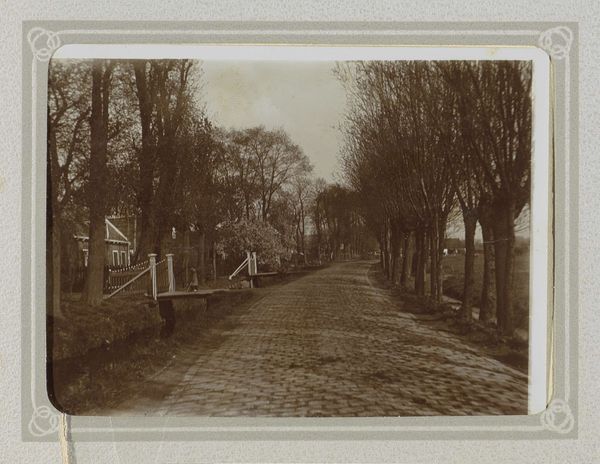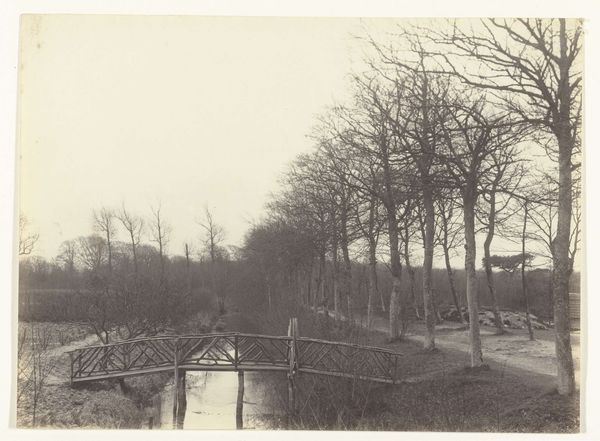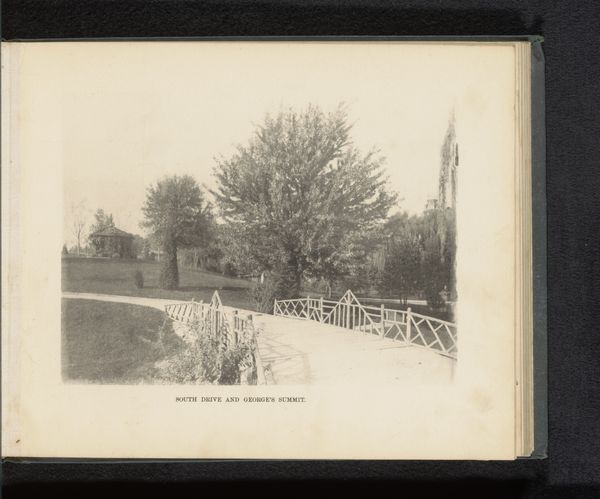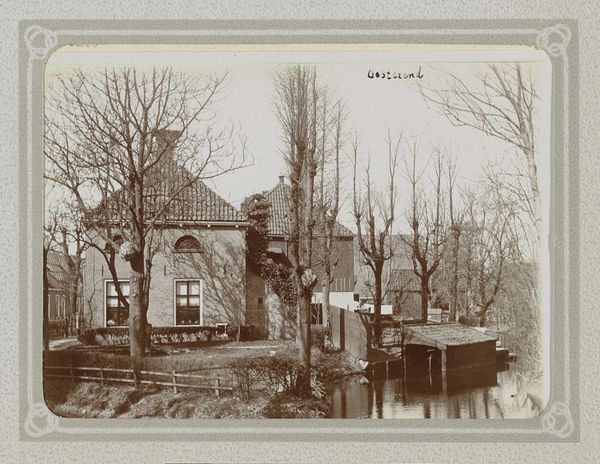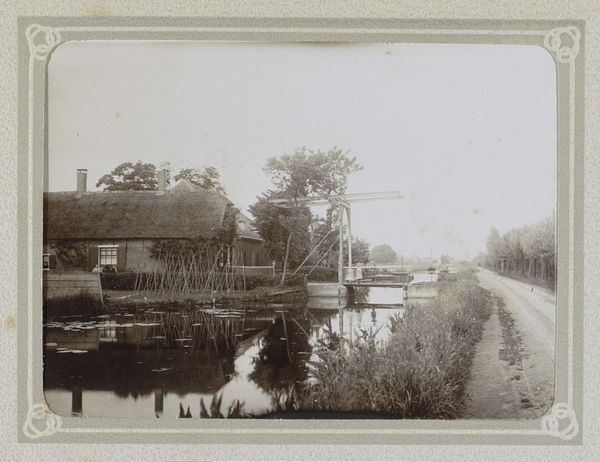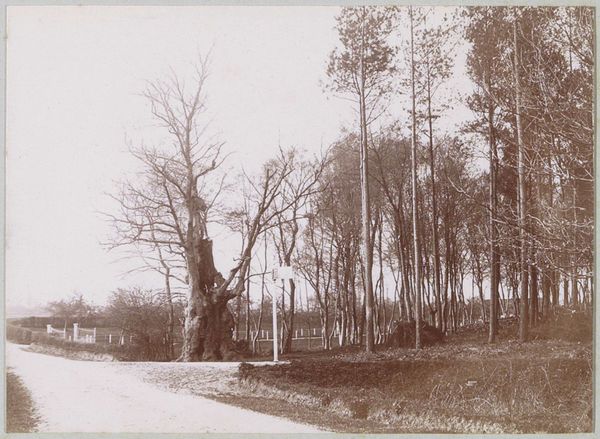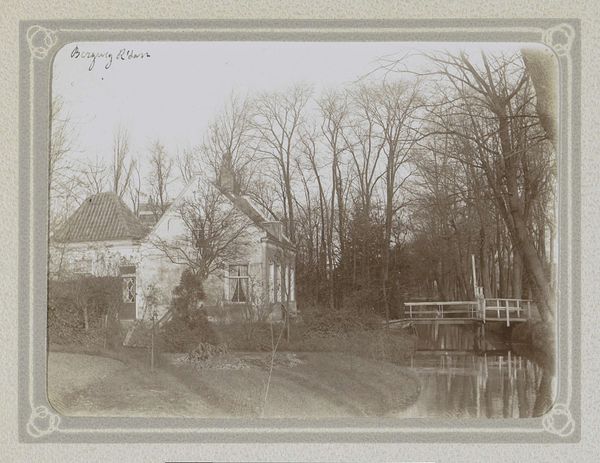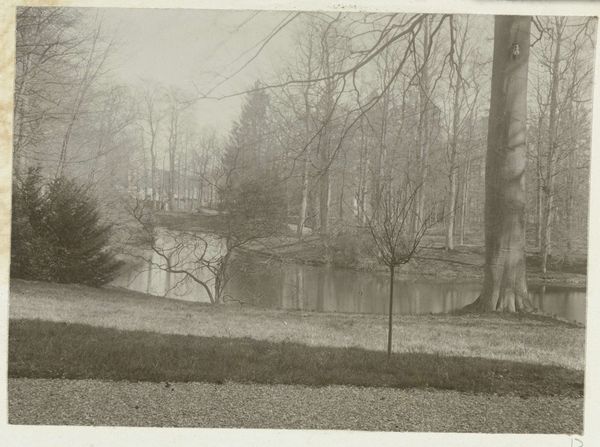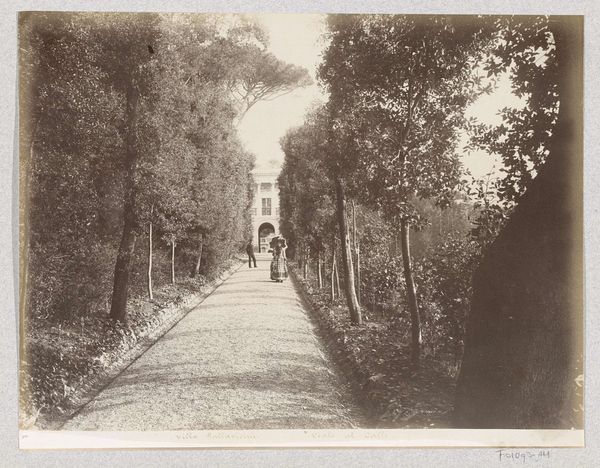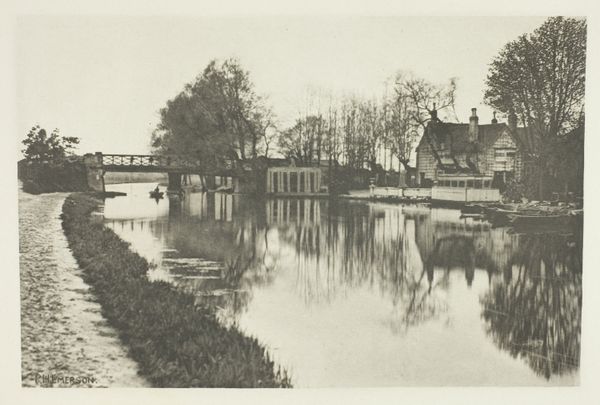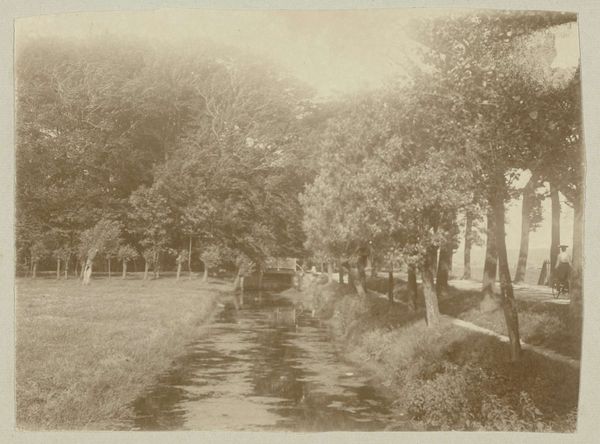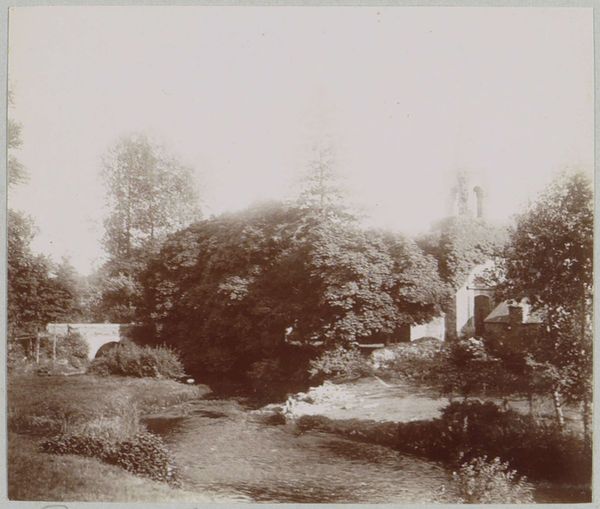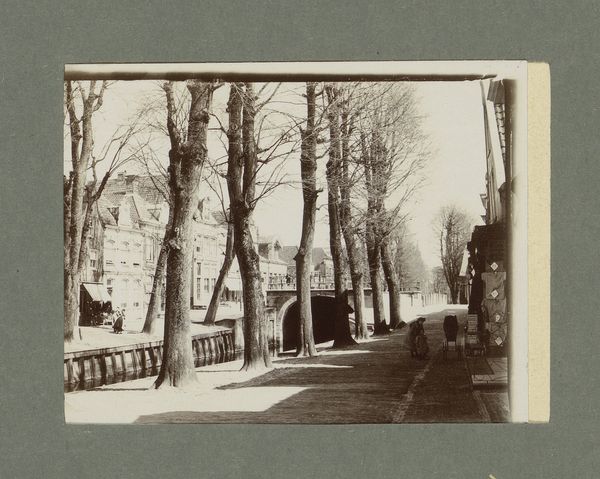
Dimensions: height 81 mm, width 110 mm
Copyright: Rijks Museum: Open Domain
Curator: This sepia photograph, "Man fietsend naast een sloot in een dorp," by Folkert Idzes de Jong, circa 1905-1907, offers a fascinating glimpse into rural Dutch life. Editor: There's such stillness, isn't there? A pervasive quiet. The limited tonal range amplifies the feeling. It feels very much like observing a memory, both personal and cultural. Curator: Indeed, the scene evokes a profound sense of place, and this humble bicycle takes on symbolic weight. The bicycle, still fairly novel at this point, represents a democratizing force in rural communities, broadening individual horizons. Editor: Yes, a powerful symbol of newfound freedom and perhaps even resistance to traditional social structures. Before mass automobile adoption, the bicycle gave a certain freedom of movement, largely to men in these circumstances, subtly shifting social dynamics. Curator: Consider the careful arrangement of elements – the canal dividing planes and guiding the viewer’s eye toward the cyclist disappearing in the distance. It presents the individual balanced within his environment and in harmony with its familiar rhythm. Editor: Harmony or confinement? I question whether the photograph consciously considers its own gendered gaze. The lone cyclist, ostensibly free, still travels a predetermined path, a reality mirrored by societal expectations, and those cobblestones still show wear and tear of history on them. Curator: I take your point. Although ostensibly depicting a universal subject, images such as this carry specific implications for women of the era, restricted largely to domestic and familial spheres, excluded from a level of societal interaction and activity. Editor: Exactly, understanding that underlying constraint highlights how such a photograph participates in broader discourses of gender and class. To me, art history matters far beyond aesthetics, it tells how history is written. Curator: Ultimately, de Jong's photograph captures a poignant moment of transition and the universal experience of the individual carving a new path. I think both these freedoms and constraints shape the subject in an important way. Editor: It’s remarkable how a seemingly simple snapshot reveals the complexity woven into everyday life, isn't it? The ripples are deeper and more forceful than at first glance.
Comments
No comments
Be the first to comment and join the conversation on the ultimate creative platform.
